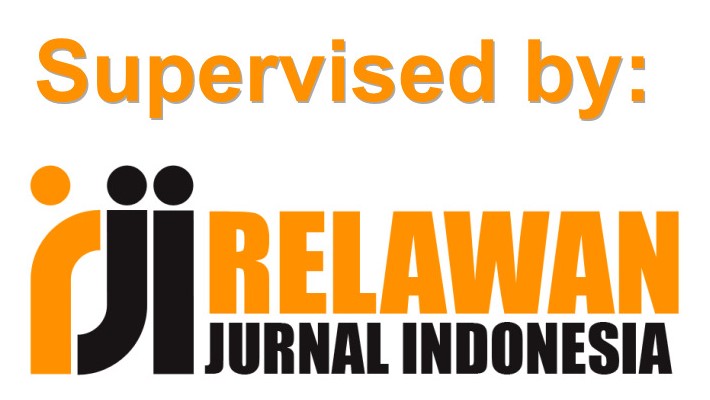Edukasi Dan Pelatihan Dapat Meningkatkan Pengetahuan, Sikap dan Praktik Penggunaan Alat Pelindung Diri Pada Kelompok Wanita Nelayan Di Wilayah Pesisir Maccini Baji Kabupaten Pangkep
DOI:
https://doi.org/10.31100/matappa.v4i1.1358Keywords:
Pengetahuan, Sikap, Praktik, Alat Pelindung DiriAbstract
Workers in the informal sector, especially women fishing groups in the coastal area of Maccini Baji, often work in an unfavorable environment and neglect occupational health/safety due to weak capital and lack of knowledge about the use of personal protective equipment. Whereas workers' health is a development asset that should be protected and cared for. Community service, especially the Women Fishermen Group in the coastal area of Maccini Baji, stems from the problem of the high incidence of skin diseases. Factors that influence the high prevalence of skin diseases are inadequate knowledge, attitudes and practices of using Personal Protective Equipment. Education and training are solutions that are agreed with the community in an effort to increase knowledge, attitudes and skills regarding the use and distribution of personal protective equipment. To observe and evaluate the knowledge, attitudes and abilities of the Women Fishermen Group using a pre-post test questionnaire, and a skill checklist both before and after education and training. The results of the activity showed that there was an increase in the knowledge, attitude and practice of the Women Fishermen Group about the importance of using Personal Protective Equipment.
References
Ahmadi A.A., Gobabaei F., & Nasiri P. (2016). A Survey of The Effect of Toluene on The Impact of Noise on Hearing Loss in Workers. Journal Of Occupational Health And Epidemiology, 3(4):233-241.
Al-Omari K., & Okasheh H. (2017). The Influence of Work Environment on Job Performance: A Case Study of Engineering Company in Jordan. International Journal of Applied Engineering Research, 12(24):15544-15550.
Alzahrani R.A., Alzahrani A.O., Alghamdi A.A., MA A., Alamri A.H., Alghamdi S.G., & Alzahrani F.A. (2018). Knowledge, Behaviors, and Attitudes about Skin Desease among Adults in Albaha Region: A Cross-sectional Study. The Egyptian Journal of Hospital Medicine, 70(5):824-827.
Aslpoor N.D., & Amirnejad G. (2016). Effect of Employees’welfare On Job Performance of Staff At The Islamic Azad University, Abadan and Khorramshahr Branches. IIOAB Journal, 7(Suppl 4):419-425.
Cancelliere C., Cassidy J.D., Ammendolia C., & CoÌ‚teÌ, P. (2016). Are Workplace Health Promotion Programs Effective At Improving Presenteeism In Workers? A Systematic Review And Best Evidence Synthesis Of The Literature. BMC Public Health, 11(1), 395-406.
Eziyi J.A.E., Akinwumi I.O., Olabanji I.O., Ashaolu O.O., & Amusa Y.B. (2016). Noise Pollution: Knowledge, Attitudes and Practice of Sawmill Workers In Osun State, Nigeria. Nigerian Journal of Health Sciences, 15(1):36-39.
Feder K., Michaud D., McNamee J., Fitzpatrick E., Davies, H., & Leroux, T. (2017). Prevalence of Hazardous Occupational Noise Exposure, Hearing Loss, and Hearing Protection Usage Among A Representative Sample of Working Canadians. Journal Of Occupational And Environmental Medicine, 59(1):92.
Heupa A.B., Gonçalves C.G.D.O., & Coifman H. (2016). Effects Of Impact Noise on The Hearing of Military Personnel. Brazilian Journal of Otorhinolaryngology, 77(6):747- 753.
Ismail A.F., Daud A., Ismail Z., & Abdullah B. (2016). Noise-Induced Hearing Loss Among Quarry Workers In A North-Eastern State Of Malaysia: A Study On Knowledge, Attitude and Practice. Oman Medical Journal, 28(5):331.
Keppler H., Ingeborg D., Sofie D., & Bart V. (2016). The Effects of A Hearing Education Program On Recreational Noise Exposure, Attitudes and Beliefs Toward Noise, Hearing Loss, and Hearing Protector Devices In Young Adults. Noise & health, 17(78):253-262.
Kirchner D.B., Evenson E., Dobie R.A., Rabinowitz P., Crawford J., Kopke R., & Hudson, T.W. (2016). Occupational Noise-Induced Hearing Loss: ACOEM Task Force On Occupational Hearing Loss. Journal of Occupational and Environmental Medicine, 54(1):106- 108.
Khoshakhlagh A.H., & Ghasemi M. (2017). Occupational Noise Exposure and Hearing Impairment among Spinning Workers in Iran. Iranian Red Crescent Medical Journal, 19(5):1-7.
Lagat A.C., Mutai B.K., Kosgey I.S., & Nyahururu K. (2016). Importance of Employee Welfare and Performance: The Case of The UASU At Egerton University, Kenya. European Journal of Business and Management, 6(7):205-211.
Leshchinsky A. (2018). The Impact of Annual Audiograms on Employee’s Habits and Awareness Regarding Hearing Protection and Noise Induced Hearing Loss, On and Off the Job. Workplace health & safety, 66(4):201-206.
Lie A., Skogstad M., Johannessen H.A., Tynes T., Mehlum I.S., Nordby K.C., ... & Tambs K. (2016). Occupational Noise Exposure and Hearing: A Systematic Review. International Archives Of Occupational And Environmental Health, 89(3):351- 372.
Lobato D.C.B., De Lacerda A.B.M., Gonçalves C.G.D.O., & Coifman H. (2016). Auditory Effects Of Exposure To Noise And Solvents: A Comparative Study. International Archives Of Otorhinolaryngology, 18(02):136-141.
Moruri L.O., Evans O.O., & Jennifer. M.K. (2020) Influence Of Employee Welfare Facilities On Their Performance At The Kenya Judiciary Systems In North Rift Kenya. Global Journal of Human Resource Management, 6(1): 26-34.
Muflichatun (2016). Hubungan Antara Tekanan Panas Denyut Nadi Dan Produktivitas Kerja Pada Pekerjaan Pandai Besi Paguyuban Wesi Aji Donorejo Batang (Skripsi). Semarang: Universitas Negeri Semarang.
Nelson D.I., Nelson, R.Y., Concha†Barrientos M., & Fingerhut M. (2016). The Global Burden of Occupational Noiseâ€Induced Hearing Loss. American Journal of Industrial Medicine, 48(6):446-458.
Oshima K., Suchert S., Blevins N.H., & Heller S. (2016). Curing Hearing Loss: Patient Expectations, Health Care Practitioners, And Basic Science. Journal of Communication Disorders, 43(4):311-318.
Pelegrin A.C., Canuet L., RodriÌguez AÌ.A., & Morales M.P.A. (2016). Predictive Factors of Occupational Noise- Induced Hearing Loss In Spanish Workers: A Prospective Study. Noise & Health, 17(78):343-349.
Pushpakumari M.D. (2018). The Impact Of Job Satisfaction On Job Performance: An Empirical Analysis. In City Forum, 9(1):89- 105.
Reddy R.K., Welch D., Thorne P., & Ameratunga S. (2016). Hearing Protection Use In Manufacturing Workers: A Qualitative Study. Noise and Health, 14(59):202-209.
Rus R.M., Daud A., Musa K.I., & Naing L. (2018). Knowledge, Attitude and Practice of Sawmill Workers Towards Skin Disease of Fisherman In Kota Bharu, Kelantan. The Malaysian Journal Of Medical Sciences, 15(4):28-34.
Sayapathi B.S., Su A.T., & Koh D. (2016). Knowledge, Attitudes and Practice in Relation to Noise-induced Hearing Loss in Two Factories. Research Journal of Biological Sciences, 9(6):197-204.
Waititu F., Kihara P., & Senaji T. (2017). Effect of Employee Welfare Programmes On Employee Performance: A Case Study of Kenya Railways Corporation. International Academic Journal of Human Resource and Business Administration, 2(3):611-631.
Yusriani, Y., & Agustini, T. (2021). Pencegahan Penularan Novel Corona Virus (Covid-19) Melalui Edukasi 10 Jari Untuk Anak Indonesia. CARADDE: Jurnal Pengabdian Kepada Masyarakat, 3(3), 422-428.
Yusriani, Y., & Nurlinda, A. (2020). Drinking Secang Water And Fitness Of Farmers In The Aralle Village, Kohu District: Hubungan Kebiasaan Minum Air Rebusan Kayu Secang Dengan Kebugaran Petani Di Desa Aralle Kecamatan Kohu. Journal Prima Health Science, 1(4), 110-114.
Yusriani, Y., & Agustini, T. (2021, January). Edukasi Melalui Media Video Meningkatkan Pengetahuan, Sikap Dan Tindakan Siswa Dalam Mencegah Penularan Covid-19. In Konferensi Nasional Pengabdian Masyarakat (KOPEMAS) 2020.
Downloads
Published
Issue
Section
Citation Check
License
Jurnal ini memberikan akses terbuka langsung dengan prinsip bahwa membuat penelitian tersedia secara bebas untuk publik mendukung pertukaran pengetahuan global yang lebih besar.
Semua artikel yang diterbitkan dapat di Akses secara Terbuka atau Gratis untuk semua orang baik untuk dibaca maupun diunduh di bawah lisensi CC-BY.
Ppenulis mempertahankan kepemilikan hak cipta untuk artikel mereka, tetapi penulis memberikan izin kepada orang lain untuk menggunakan konten publikasi di Matappa secara keseluruhan atau sebagian asalkan karya aslinya dikutip dengan benar.
Hak cipta mencakup hak eksklusif untuk mereproduksi dan menyampaikan artikel dalam semua bentuk dan media, termasuk cetak ulang, foto, mikrofilm dan reproduksi serupa lainnya, serta terjemahan. Reproduksi bagian manapun dari jurnal ini, penyimpanannya dalam basis data dan transmisi dengan bentuk atau media apa pun, seperti elektronik, salinan elektrostatik dan mekanik, fotokopi, rekaman, media magnetik.

MATAPPA is licensed under a Creative Commons Attribution 4.0 International License.








